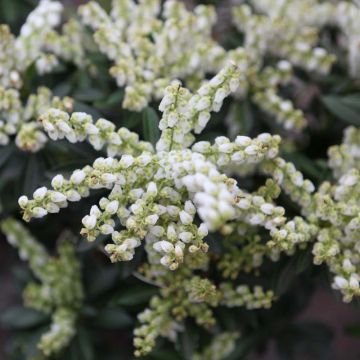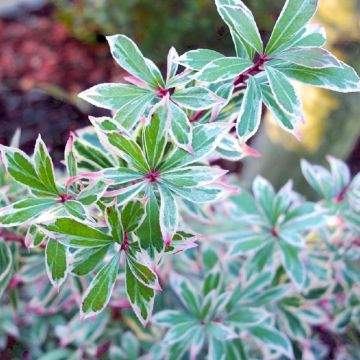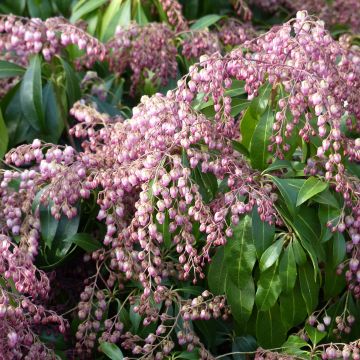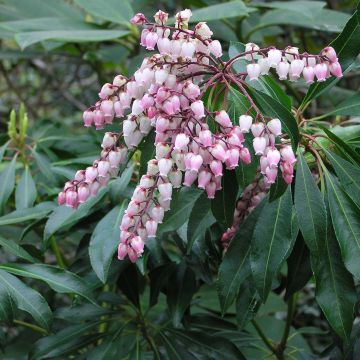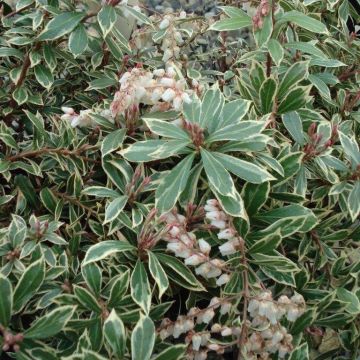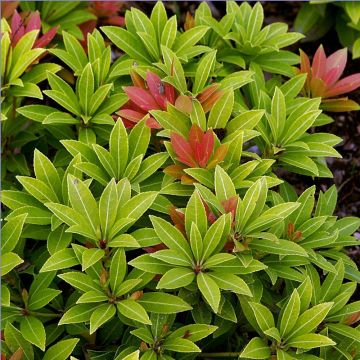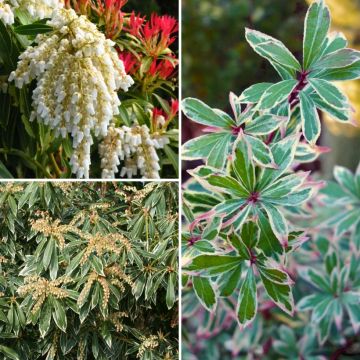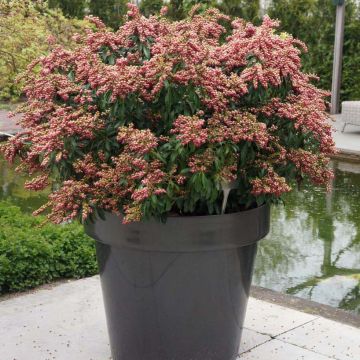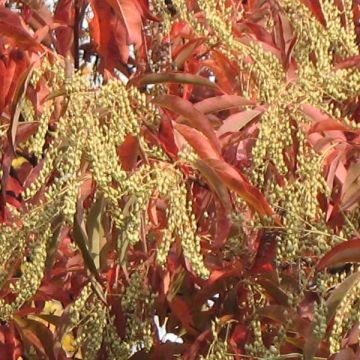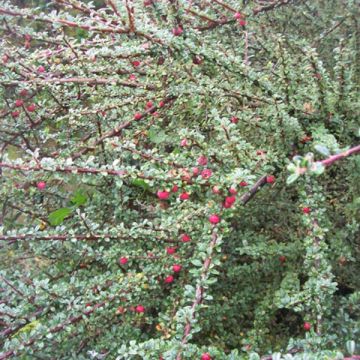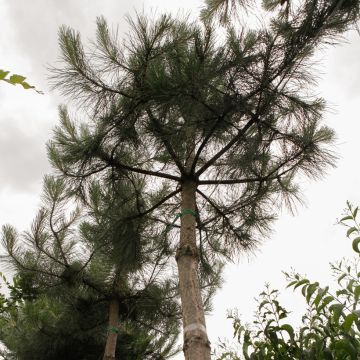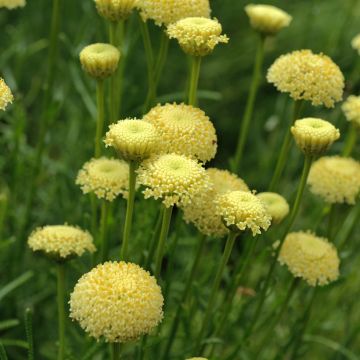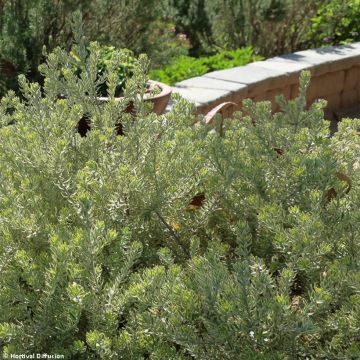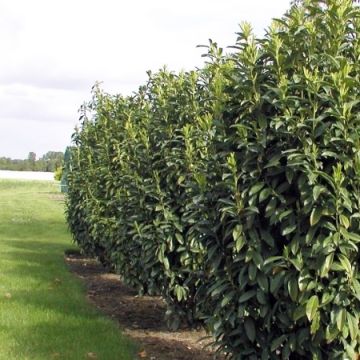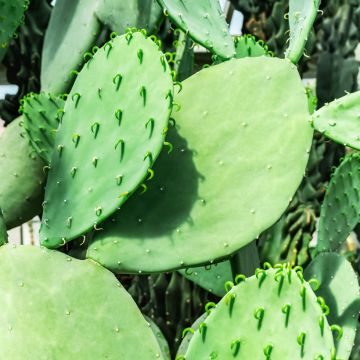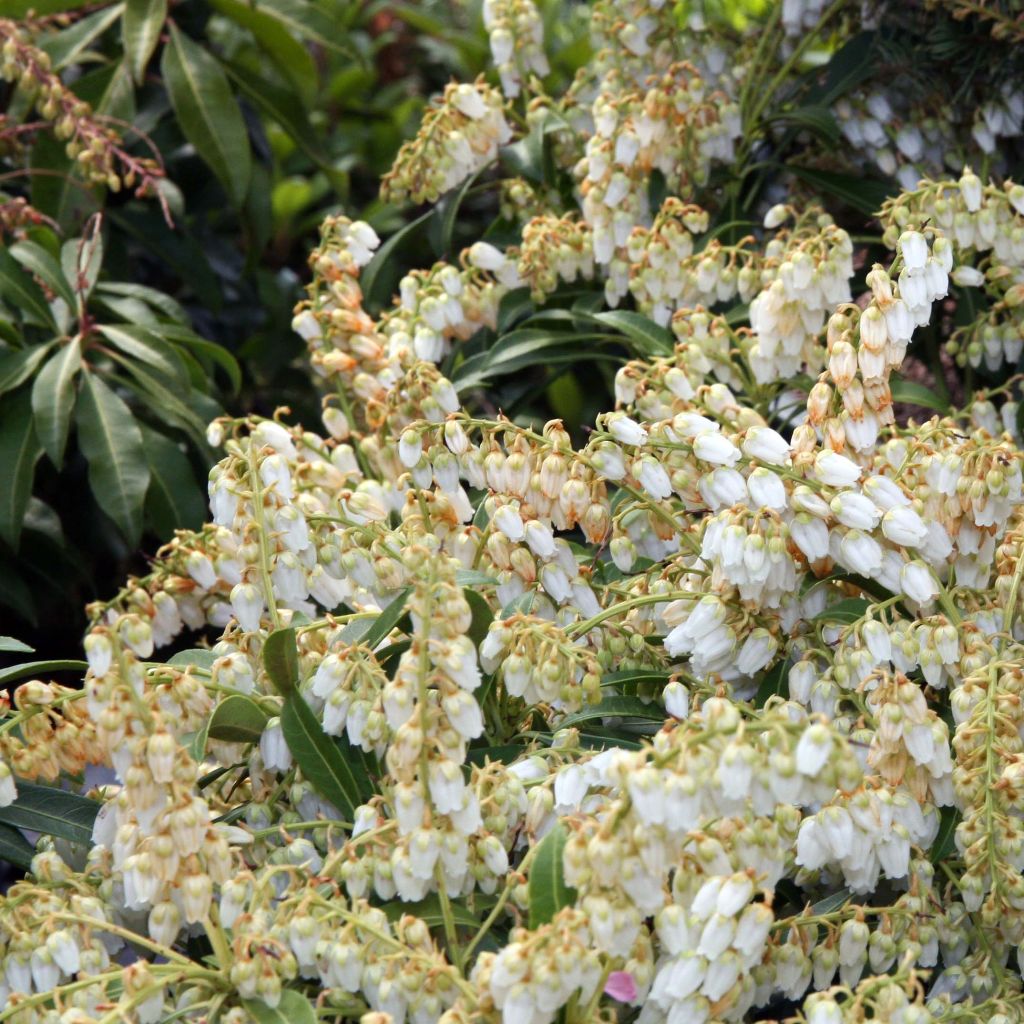

Pieris japonica Purity - Japanese Andromeda
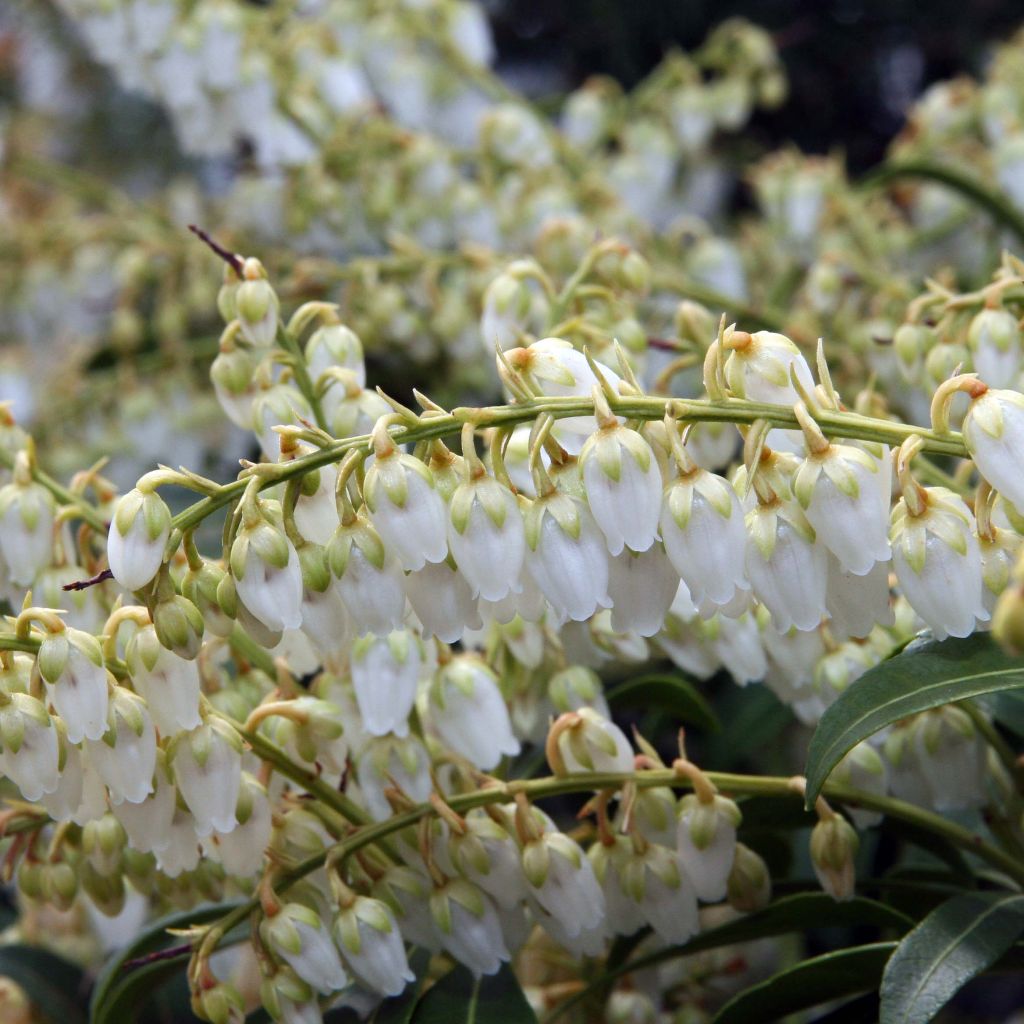

Pieris japonica Purity - Japanese Andromeda
Pieris japonica Purity - Japanese Andromeda
Pieris japonica Purity
Japanese Andromeda, Japanese Pieris, Lily-of-the-Valley Bush
This item cannot be shipped to the selected country
Delivery charge from €5.90
More information
Schedule delivery date,
and select date in basket
This plant carries a 24 months recovery warranty
More information
We guarantee the quality of our plants for a full growing cycle, and will replace at our expense any plant that fails to recover under normal climatic and planting conditions.
From €5.90 for pickup delivery and €6.90 for home delivery
Express home delivery from €8.90.

Does this plant fit my garden?
Set up your Plantfit profile →
Description
Pieris japonica 'Purity' is a new variety of Japanese Andromeda selected in Japan for its floriferousness and compact habit. From March onwards, beautiful pure white blooms appear in abundance, clearly visible against the foliage. They are composed of large white bell-shaped flowers gathered in slightly upright panicles, crowning a compact and low-growing bush, in a dome shape. Particularly well-suited for container cultivation to decorate a terrace, this variety has won awards in England for its ornamental qualities, and for its ease of cultivation in non-calcereous soil. By illuminating the partially shaded areas of a garden or terrace, this white-flowering Andromeda offers a charming spectacle throughout the year.
Pieris japonica, commonly called Japanese Andromeda, is native to eastern China, Japan, and Taiwan. It belongs to the Ericaceae family. The cultivar 'Purity', recently obtained by Pépinières Hakoneya in Japan, has a spreading habit, wider than it is tall. Its growth is very slow, ultimately forming a shrub measuring on average 1.35 m (4 in 5 ft) in height by 1.50 m (4 in 11 ft) in width. It has beautiful evergreen foliage, composed of long, shiny, lanceolate and pointed leaves, slightly toothed along the edges, measuring up to 10 cm (3.9 in) in length. The young shoots are tender green, then the leaves turn dark green. Clusters of white floral buds appear from the beginning of winter, enhancing the decorative effect of this Japanese Andromeda during the drearier months. In March-April, it becomes covered with a multitude of semi-pendulous clusters, 3 to 6 cm (1.2 - 2.4 in) long, composed of large white bell-shaped flowers, reminiscent of lily-of-the-valley blooms. The flowers give off a light honey fragrance.
Pieris japonica are hardy shrubs, appreciating acidic and moist soils, and partial shade. Due to its small size and extremely decorative appearance throughout the seasons, this 'Purity' Japanese Andromeda is perfectly suited for container cultivation, on a terrace, patio, or partially shaded balcony. It will also thrive under the cover of large trees, along the edge of partially shaded shrubs, as a low hedge, in a shaded rock garden, and particularly within an ericaceous bed, alongside other acid-loving plants such as Camellias, Rhododendrons, Azaleas, Nandina, or Heathers. With its generous all-white flowering, it will create a sensational effect when combined with spring bulbs. This Japanese Andromeda animates the garden beautifully in all seasons, even in winter. It has its rightful place in a Japanese style garden.
Report an error about the product description
Pieris japonica Purity - Japanese Andromeda in pictures
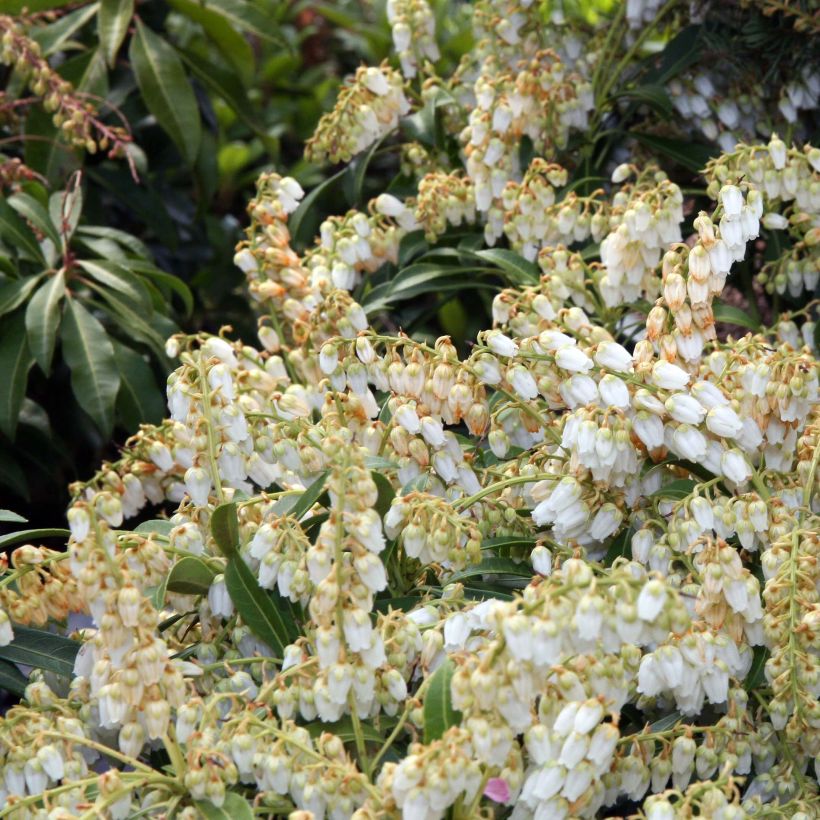

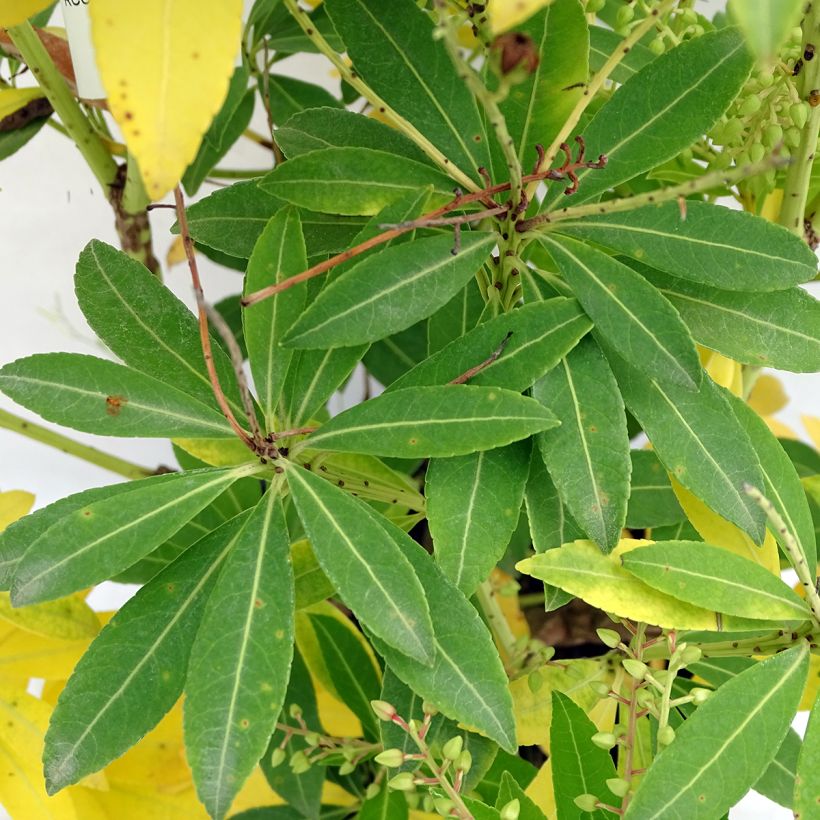

Plant habit
Flowering
Foliage
Botanical data
Pieris
japonica
Purity
Ericaceae
Japanese Andromeda, Japanese Pieris, Lily-of-the-Valley Bush
Cultivar or hybrid
Other Pieris
Planting and care
Pieris japonica 'Purity' appreciates a partially shaded site or gentle sunlight, as well as an acidic, cool, light, humus-rich, and well-drained soil. It offers good hardiness and can withstand temperatures down to -15°C (5 °F) in completely drained soil, but its young shoots can be damaged by late frosts. It is advisable to plant it in a position sheltered from cold, drying winter winds. Install a thick mulch at its base in autumn in harsh climates or in situations exposed to winter winds. A thick layer of fern fronds, dead leaves, and pine needles would be ideal. If its young foliage has been damaged by frost, it should be pruned back to stimulate the growth of new shoots. Appreciating good humidity, it prefers consistently moist soil but not stagnant moisture in clayey soils. To prevent soil dryness, regular watering with non-calcareous water is necessary, especially in the first year following planting and during the summer period. Planting is done in spring or autumn, in a mixture of garden soil, turf, and heather soil. In spring, it is advisable to apply a layer of ericaceous soil and compost around its roots, and optionally provide a slow-release fertiliser in the form of a handful of dried blood. Take care to provide enough space for this Pieris japonica to ensure its proper development, respecting a planting distance of 70 cm (2 ft 2 in) to 1 m (3 ft 3 in) around its base. After flowering, remove faded blooms to avoid unnecessarily exhausting the plant through seed production. Also, lightly prune bare branches that compromise the bushy habit of the Pieris japonica.
Planting period
Intended location
Care
-
, onOrder confirmed
Reply from on Promesse de fleurs
Evergreen shrubs
Haven't found what you were looking for?
Hardiness is the lowest winter temperature a plant can endure without suffering serious damage or even dying. However, hardiness is affected by location (a sheltered area, such as a patio), protection (winter cover) and soil type (hardiness is improved by well-drained soil).

Photo Sharing Terms & Conditions
In order to encourage gardeners to interact and share their experiences, Promesse de fleurs offers various media enabling content to be uploaded onto its Site - in particular via the ‘Photo sharing’ module.
The User agrees to refrain from:
- Posting any content that is illegal, prejudicial, insulting, racist, inciteful to hatred, revisionist, contrary to public decency, that infringes on privacy or on the privacy rights of third parties, in particular the publicity rights of persons and goods, intellectual property rights, or the right to privacy.
- Submitting content on behalf of a third party;
- Impersonate the identity of a third party and/or publish any personal information about a third party;
In general, the User undertakes to refrain from any unethical behaviour.
All Content (in particular text, comments, files, images, photos, videos, creative works, etc.), which may be subject to property or intellectual property rights, image or other private rights, shall remain the property of the User, subject to the limited rights granted by the terms of the licence granted by Promesse de fleurs as stated below. Users are at liberty to publish or not to publish such Content on the Site, notably via the ‘Photo Sharing’ facility, and accept that this Content shall be made public and freely accessible, notably on the Internet.
Users further acknowledge, undertake to have ,and guarantee that they hold all necessary rights and permissions to publish such material on the Site, in particular with regard to the legislation in force pertaining to any privacy, property, intellectual property, image, or contractual rights, or rights of any other nature. By publishing such Content on the Site, Users acknowledge accepting full liability as publishers of the Content within the meaning of the law, and grant Promesse de fleurs, free of charge, an inclusive, worldwide licence for the said Content for the entire duration of its publication, including all reproduction, representation, up/downloading, displaying, performing, transmission, and storage rights.
Users also grant permission for their name to be linked to the Content and accept that this link may not always be made available.
By engaging in posting material, Users consent to their Content becoming automatically accessible on the Internet, in particular on other sites and/or blogs and/or web pages of the Promesse de fleurs site, including in particular social pages and the Promesse de fleurs catalogue.
Users may secure the removal of entrusted content free of charge by issuing a simple request via our contact form.
The flowering period indicated on our website applies to countries and regions located in USDA zone 8 (France, the United Kingdom, Ireland, the Netherlands, etc.)
It will vary according to where you live:
- In zones 9 to 10 (Italy, Spain, Greece, etc.), flowering will occur about 2 to 4 weeks earlier.
- In zones 6 to 7 (Germany, Poland, Slovenia, and lower mountainous regions), flowering will be delayed by 2 to 3 weeks.
- In zone 5 (Central Europe, Scandinavia), blooming will be delayed by 3 to 5 weeks.
In temperate climates, pruning of spring-flowering shrubs (forsythia, spireas, etc.) should be done just after flowering.
Pruning of summer-flowering shrubs (Indian Lilac, Perovskia, etc.) can be done in winter or spring.
In cold regions as well as with frost-sensitive plants, avoid pruning too early when severe frosts may still occur.
The planting period indicated on our website applies to countries and regions located in USDA zone 8 (France, United Kingdom, Ireland, Netherlands).
It will vary according to where you live:
- In Mediterranean zones (Marseille, Madrid, Milan, etc.), autumn and winter are the best planting periods.
- In continental zones (Strasbourg, Munich, Vienna, etc.), delay planting by 2 to 3 weeks in spring and bring it forward by 2 to 4 weeks in autumn.
- In mountainous regions (the Alps, Pyrenees, Carpathians, etc.), it is best to plant in late spring (May-June) or late summer (August-September).
The harvesting period indicated on our website applies to countries and regions in USDA zone 8 (France, England, Ireland, the Netherlands).
In colder areas (Scandinavia, Poland, Austria...) fruit and vegetable harvests are likely to be delayed by 3-4 weeks.
In warmer areas (Italy, Spain, Greece, etc.), harvesting will probably take place earlier, depending on weather conditions.
The sowing periods indicated on our website apply to countries and regions within USDA Zone 8 (France, UK, Ireland, Netherlands).
In colder areas (Scandinavia, Poland, Austria...), delay any outdoor sowing by 3-4 weeks, or sow under glass.
In warmer climes (Italy, Spain, Greece, etc.), bring outdoor sowing forward by a few weeks.


































